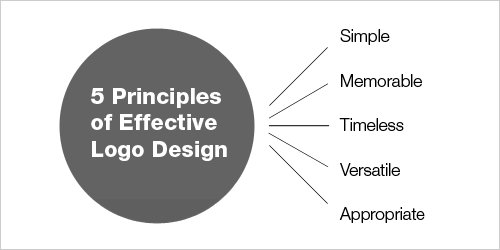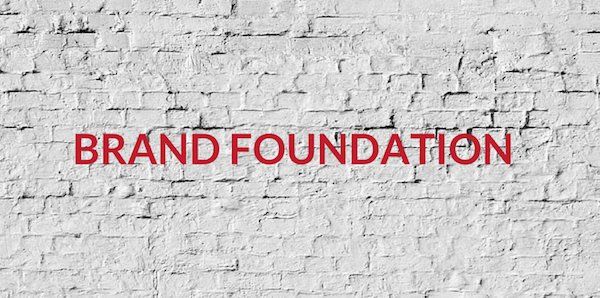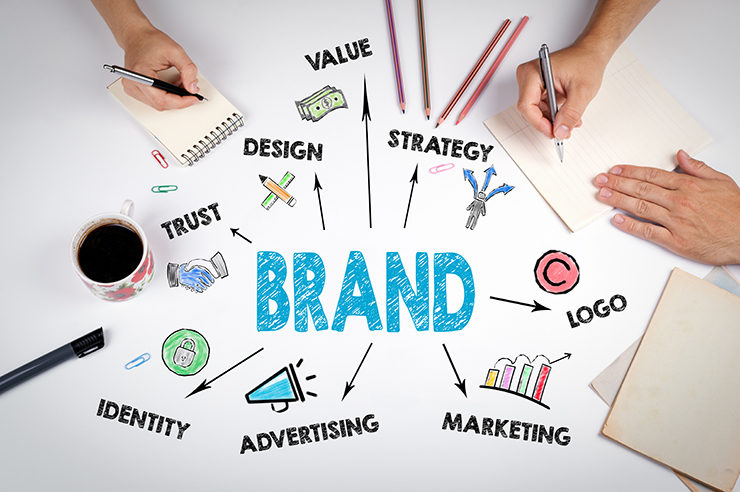Brand identity is a confusing term. Some feel it’s simply a logo others say it’s a logo with stationery and a business card design. But if you want to build a brand, then you need to understand it’s much more than a logo.
A brand identity is a system of tools that unifies the vision with all parties involved. You see, when there are multiple layers of management or employees strung across the world, you want all of them saying and doing the same thing to create a consistent experience for your customers.
The Difference Between a Brand, Identity, and a Logo

Brand
According to Al Ries, a brand is a position in one’s mind, a perceived image, and an emotional connection to a company’s product or service. How the customer feels is also what they communicate. If they love the product or service, they pay premiums, they talk about it with others, and they continually buy more.
Identity
An identity encompasses the distinct visual communications that represent a company, product, or service. Think of this as a predefined framework of visual elements and guidelines to maximize cohesion and consistency across all mediums. An effective identity kit includes fonts, colors, treatments, and graphic elements. Adhering to guidelines in the form of a style guide is apparent when looking at stationery, marketing collateral, packaging, signage, and the website of a particular company. You should see a clear, consistent relationship between each medium.
Logo
The core identifiable visual mark attributable to a company. Most commonly in the form of a symbol or text treatment, and a mix of the two. Otherwise known as a brandmark, its purpose is memory and distinction between competition. It’s like a landmark in the corporate world. Smashing Magazine says it best with its 5 Principles of Effective Logo Design.

Image credit: Smashing Magazine
Why You Need a Brand Identity

A brand identity is not a formality required to be in business. It’s a company’s best effort to control customer perception. Much more than a logo, a brand identity is a system for internal and external communication.
Internally, it’s used to align the vision of the company with what will be presented to customers. All levels of employees from C-suites to floor clerks should have a clear understanding of the company’s values, purpose, and vision, so they can properly execute the brand promise.
Externally, customers should see the consistent actions to establish a connection, and foster and reaffirm their beliefs in a company to the point (if done properly) they become advocates for a brand.
What’s in a Brand Foundation?

A brand foundation is a set of tools used to establish the who, what, why, and how to communicate your company, product, or service.
Not every company is created equally, therefore not all brands need each tool. Each is integral to organizing a communication strategy and creating a brand focus.
Brand Vision Statement – the aspirational guiding light that conveys the company’s highest goal. This should come from the founder and set the expectation of where the company is headed.
Purpose (Why Statement) – the purpose of the company, and why it exists. This should align with what your customer values.
Mission Statement – a clear statement with the focal aim for your company distilled from the values and objectives that encompass what you offer to your customers and clients.
Unique Value Proposition (UVP) – a clear, succinct statement that explains the promise of value to be delivered.
Core Values – the source of distinctiveness or deeply ingrained beliefs and principles that uphold a company’s existence and guide its actions.
Logo – the visual element in the form of a type or symbol that helps customers remember your company.
Identity System – a family of visuals and messages around the logo, forming a systematic correlation of elements to help design marketing and business collateral across all platforms of media. [UI kit, stationary, and package design]
Style Guide – a set of standards and rules for the messaging and design of media. This helps control the usage to maintain consistency.
Manage & Monitor a Brand Identity

After a company has established and launched a new brand identity, it’s important to manage and monitor its evolution. Like a person, a brand’s personification will ebb and flow with customer interactions, market shifts, and the growth of the company. It takes a lot of care to ensure customers receive the same consistent pattern messages across multiple platforms with continually changing information.
Communicating the Brand Identity is a never-ending task and should become a ritual. Your vision, purpose, mission, and core values should be in written form, but these should be ritualistic, almost repetitious communication from leadership staff. Your foundation should be verbally communicated as much as possible. For all marketing, sales and advertising use the style guide as the gospel. Over time, updates and iterations will take place, but demand strict adherence to all internal and external marketing personnel to ensure your brand is presented as it should be.
As the old adage goes “we can only control how we’re presented, not how we’re perceived.” But with the proper brand identity, we can do our damnedest to be the exception.
Get a better branding strategy that suits your company.
Marketing experts can help you establish a powerful brand. Learn more about our marketing programs and contact Oyova — a St. Petersburg web design, content marketing, social media management, and e-commerce web development company.
Our Awards













